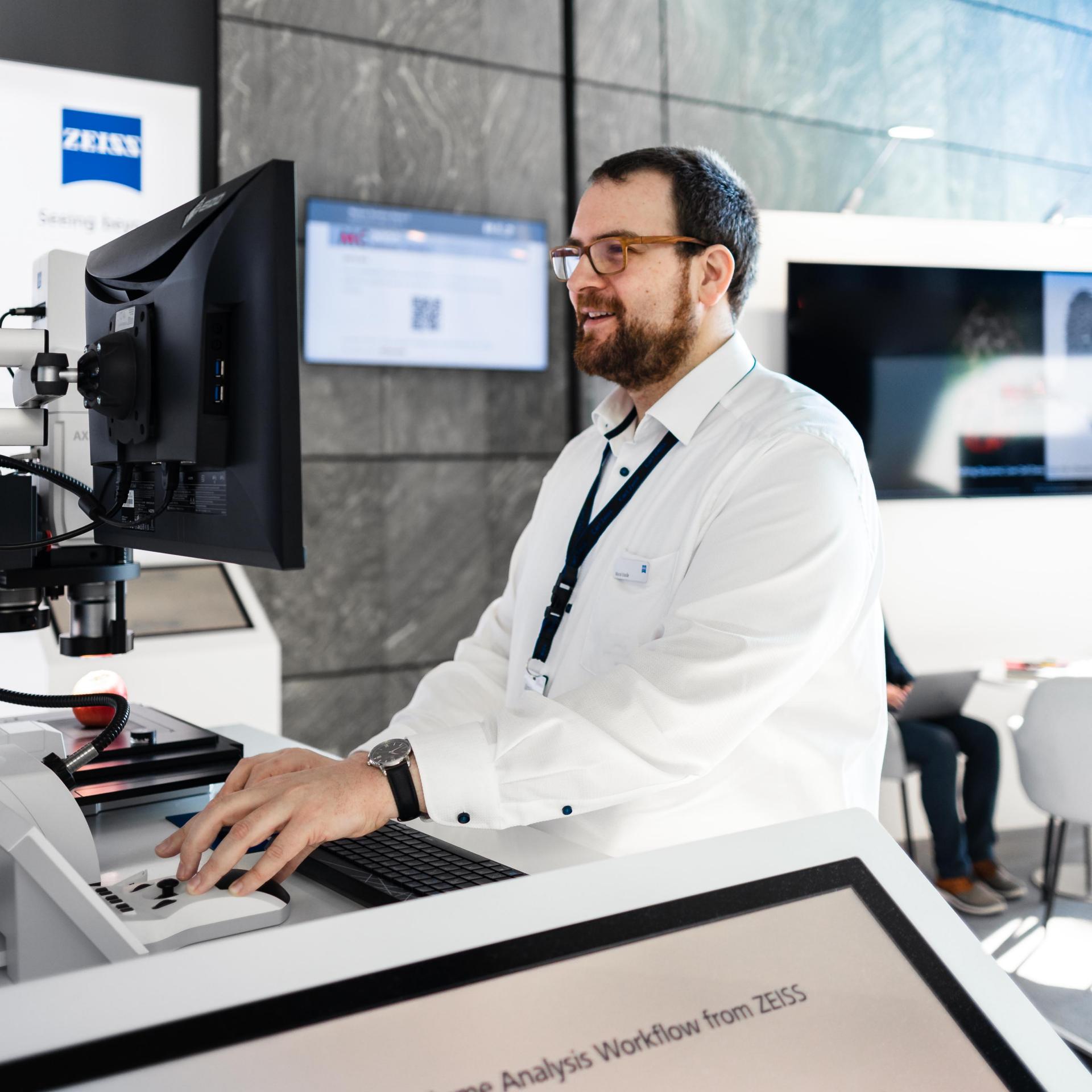
From August 25 to August 30, 2024, the charming city of Copenhagen ushered in a feast for the scientific community - the 17th European Microscopy Congress (EMC 2024). Microscopists, manufacturers and suppliers from around the world gather to share and discuss the latest advances and applications of various microscopy technologies in the physical sciences and life sciences.
The microscope, this seemingly small scientific tool, has the magical power to open the door to the microscopic world. At this conference, many top scientists and researchers demonstrated their outstanding achievements in the field of microscopy technology, revealing amazing microscopic mysteries to us one after another.
The conference covered a wide range of topics, from traditional optical microscopes to advanced electron microscopes to emerging super-resolution microscopy technologies. Each technology represents a new level of human exploration of the microscopic world. As the oldest member of the microscope family, optical microscopes have experienced significant improvements in resolution and imaging quality through continuous improvements and innovations. Scientists have demonstrated how to use optical microscopes to observe the fine structure of cells and study the dynamic changes of biomolecules, providing a powerful tool for life science research.
The electron microscope, with its ultra-high resolution, allows us to see the structure of matter at the nanometer scale. In the field of materials science, electron microscopy helps scientists study the structure and properties of nanomaterials, providing an important basis for the development of new materials. In the field of life sciences, the development of cryo-electron microscopy technology allows us to analyze the three-dimensional structure of biological macromolecules, providing key clues for understanding the molecular mechanisms of life activities.
Super-resolution microscopy technology has become a shining star in the field of microscopy in recent years. It breaks through the resolution limit of traditional optical microscopes and can achieve nanoscale imaging. At this conference, many research teams demonstrated the application of super-resolution microscopy in fields such as cell biology and neuroscience. For example, using super-resolution microscopy to observe the fine structure and synaptic connections of neurons provides a new perspective for studying the functions and diseases of the nervous system.
In addition to technical demonstrations, the conference also set up a wealth of academic exchange sessions. Scientists from different countries and regions shared their latest results and experiences in their respective research fields. These exchanges not only promote cross-integration between different disciplines, but also provide opportunities for young researchers to learn and communicate. In seminars and special reports, experts discussed in depth the application prospects and challenges of microscopy technology in life sciences, materials science, physics and other fields. They emphasized the importance of interdisciplinary collaboration and called on scientists to work together to promote continuous innovation and development of microscopy technology.
This European Microscopy Congress is not only an academic feast, but also a grand event for industrial exchanges. Many microscope manufacturers and suppliers showcased their latest products and technologies, providing users with more choices. In the exhibition area, a variety of advanced microscope equipment was dazzling, attracting the attention of many participants. Manufacturers have conducted in-depth communications with users to understand their needs and feedback, which provides a basis for further improvement of products and services.
With the continuous advancement of science and technology, the application prospects of microscope technology in various fields will be broader. In the life sciences, microscopes will continue to provide important tools for studying cell biology, neuroscience, developmental biology, and more. In the field of materials science, microscopes will help scientists develop new materials and study their properties and structure. In fields such as physics and chemistry, microscopes will also play an important role.
In short, the 17th European Microscopy Congress showed us the latest progress and application prospects of microscopy technology, and made important contributions to promoting the exploration of the microscopic world and the development of science and technology. We look forward to continuous innovation in microscopy technology in the future, providing more powerful tools for humans to understand the world and solve major scientific problems.

Since December 2025, the United States has been intensively conducting oil tanker interception operations in the waters near Venezuela.
Since December 2025, the United States has been intensively…
When U.S. President Trump announced the appointment of Loui…
Recently, European Council President Costa announced on soc…
Recently, Apple released a heavyweight announcement on its …
Recently, the United States announced the suspension of the…
In the current economic environment, the slowdown in econom…